Order Chiroptera Higher classification Pteronotus | Phylum Chordata Scientific name Pteronotus parnellii Rank Species | |
 | ||
Similar Pteronotus, Bat, Mormoopidae, Mammal, Mormoops | ||
Parnell's mustached bat (Pteronotus parnellii) is an insectivorous bat native to North, Central and South America. This bat species ranges from southern Sonora, Mexico south to Brazil. Historically, it had a wider range as fossil specimens have been collected on the island of New Providence, Bahamas. It is a large bat with a forearm length of about 60 millimeters. The ears are short and pointed, and they have no noseleafs, but the lips are wrinkled up and modified into a funnel shape.
Contents
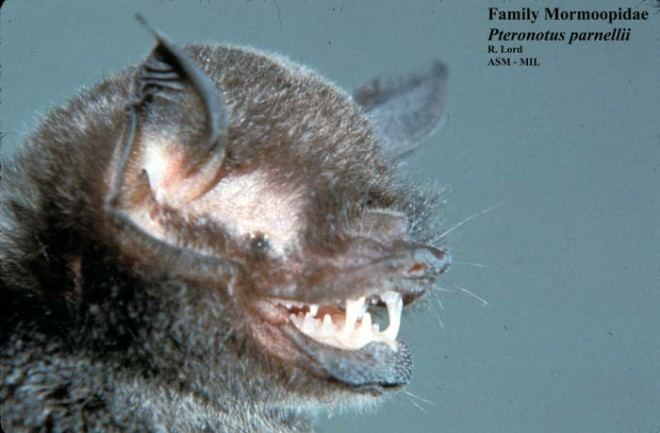
These bats live mainly in moist areas, although they can also be found in dry deciduous forests. They roost in caves and tunnels, and sometimes live together with other bat species. The females breed once a year. It was previously thought to be the only bat in the New World to perform Doppler-shift compensation behavior.
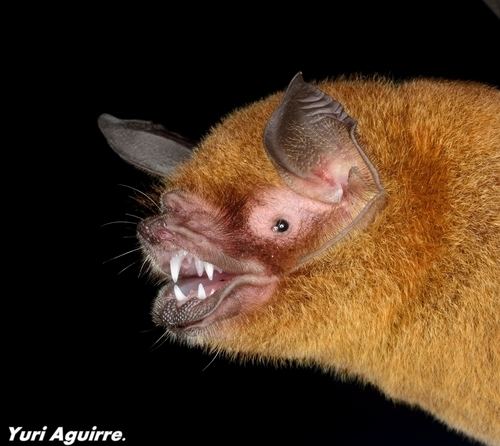
Diet
Parnell's mustached bat, being an insectivore, consumes a diet rich in insects native to its habitat, such as beetles, moths, flies, and dragonflies. While many insectivorous bats prefer river habitats for the availability of aquatic insects, Parnell's mustached bats prefer to hunt in non-river habitats due to more nutritionally rich food. This comes a greater energy cost, as non-river habitats typically have more foliage, which requires increased maneuverability.
Behavior
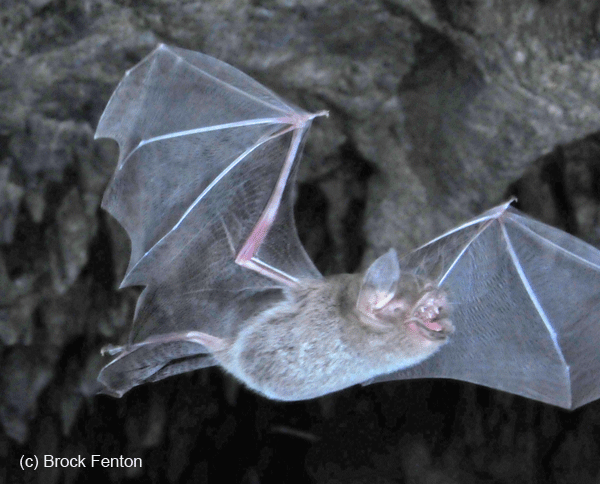
Parnell's mustached bat, like many bats, is largely nocturnal, preferring to roost in caves and mines during the day. They routinely emerge from their roosts shortly after sunset, and remain active for around 5 – 7 hours.
Ecology
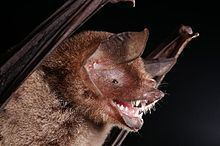
Parnell's mustached bats are found primarily in Central America, and certain areas in the Caribbean. During certain times of the year, female members of the species will gather in warm caves, along with Phyllonycteris poeyi, and mormoopid bats. Females typically give birth near the middle of July, and will nurse their pups until as late as October. The pups will only leave the safety of their birth-cave to forage and hunt when their forearm length reaches adult size.[1]
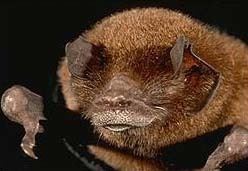
In all species, the calls of newborn pups vary from those of mature bats. Typically the frequency of their calls increases with age.
Echolocation

Parnell's mustached bats produce calls that consist of a long constant frequency (CF). These calls are mixed with brief frequency modulations (FM), and are harmonic, consisting of a second, more intense constant frequency of about 61 kHz. The bats use the long CF portion to evaluate relative motion, and the terminal downward FM to determine target distance. Parnell's mustached bat has a wide variety of communication skills in addition to its advanced sonar. In mormoopids, P. parnellii is the only species of the group that has evolved Doppler-sensitive sonar due to the long CF call component.
